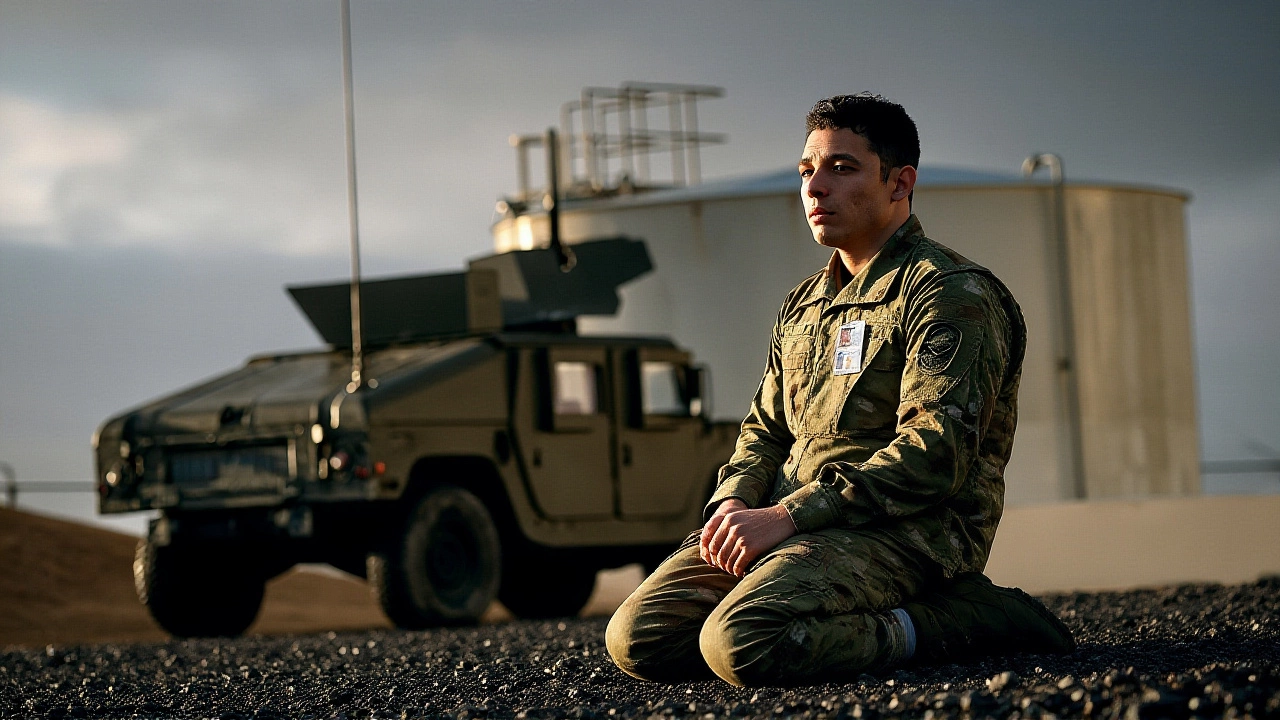Bigelow’s ‘A House of Dynamite’ Leaves World on Edge with Open‑Ended Finale
When Kathryn Bigelow, director of Netflix, released her new political thriller A House of Dynamite on July 12, 2024, the streaming giant’s library got a jolt that feels almost literal. The film drops viewers into a nightmarish scenario where a rogue nuclear missile is poised to strike the United States, and none of the usual cinematic shortcuts are offered – the ending simply stops at the moment the President must decide. Idris Elba leads the cast, while screenwriter Noah Oppenheim deliberately refuses to name any nation as the culprit, underscoring how precarious the global nuclear order has become. The story unfolds across three parallel timelines, each racing toward a possible cataclysm, and the final cut‑away leaves the world hanging in Chicago and beyond.
From Concept to Screen: How the Film Took Shape
Bigelow first hinted at the project during a panel at the Toronto International Film Festival in September 2023. She told reporters that she wanted “a film that would make you feel the weight of a decision that could end everything, without ever pointing a finger.” The script, completed in early 2024, passed through several revisions before Oppenheim’s final draft landed on Netflix’s acquisition desk. By the time the trailer dropped on May 28, 2024, the buzz was palpable: a seasoned director, a star‑studded cast, and a premise that feels eerily relevant in an era of heightened geopolitical tension.
Production took place mostly in Atlanta, with a few establishing shots filmed on location in Chicago to capture the city’s skyline. The decision to film the defense secretary’s rooftop scene at night, using practical effects rather than CGI, was a deliberate move by Bigelow to keep the audience’s focus on the character’s desperation rather than on a glossy explosion.
Narrative Mechanics: Three Crises, One Uncertain End
The film’s structure is a study in repetition. Each of the three timelines follows a similar chain of events: a missile launch alert, frantic calls between leaders, and a final jump‑off point that could be either literal or metaphorical. In the first timeline, Defense Secretary Baker (played by an unnamed actor) climbs a stairwell after a strained phone call with his daughter Caroline, portrayed by Kaitlyn Dever. The call ends with Caroline promising to call back, even though the city is “on the precipice of death.”
In the second timeline, the President (also unnamed) receives a briefing from Deputy Baerington that Russia’s foreign minister claims innocence, urging restraint. The President’s voice cracks as he asks, “So we just sit back and watch Chicago incinerate?” and then reaches out to his wife, played by Renée Elise Goldsberry, who is in Kenya. Their conversation dissolves into static, mirroring the static that will soon fill the airwaves if a launch proceeds.
The third timeline mirrors the first two, but each character’s choice is slightly altered, creating a looping tension that never quite resolves. The film never shows the actual nuclear blast; instead, it lets the audience imagine the consequences, a choice Oppenheim says “forces viewers to think about what ending we want.”

Critical Reception: Praise, Puzzlement, and Polarized Opinions
Reviews rolled in quickly after the July release. Digital Spy (June 18, 2024) praised the script’s restraint, noting that “refusing to name names reinforces how fragile the system is; anyone could be responsible for our collective doom.” The outlet highlighted Elba’s performance as “quietly ferocious, a man aware that his every move could tip the scales.”
Meanwhile, ELLE (July 22, 2024) zeroed in on the emotional core of the rooftop suicide. The magazine described the scene as “a silent shock that spares us the gore but leaves the heart pounding.” It also praised Bigelow’s decision to cut away before the President’s answer, calling the cliffhanger “a masterstroke of terror without gore.”
On YouTube, the channel Film Fugitive posted a ten‑minute deep‑dive on July 15, 2024. The reviewer, Olivia Walker, linked the film’s title to a recurring motif: a child’s toy that could “blow at any moment,” symbolizing the world’s constant nuclear dread. Walker argued that the film “shines a light on the reality of how this situation would most likely unfold” and recommended a “popcorn‑filled weekend” for viewers who enjoy political thrillers.
Not all reactions were glowing. Some viewers complained that the lack of a definitive ending left them feeling cheated, while a handful of critics argued that the film’s ambiguity risked trivializing real nuclear anxieties. Still, the consensus leans toward admiration for the bold narrative gamble.
Political and Cultural Fallout: Why the Ambiguity Matters
In the months following the release, think‑tanks and policy blogs cited the film as a cultural touchstone for discussions about nuclear deterrence. The Center for Strategic and International Studies (CSIS) posted an op‑ed on August 2, 2024, noting that “Bigelow’s film mirrors the current inability of world powers to communicate clearly under crisis conditions.” The piece quoted former State Department official Laura Whitaker, who said, “When a movie refuses to assign blame, it forces us to confront the fact that our nuclear safeguards are only as strong as the communication channels linking them.”
International reactions were muted, likely because the film deliberately avoids naming any nation. However, a Russian cultural magazine, Iskusstvo, ran a brief commentary on August 9, 2024, acknowledging that “the artwork captures the universal fear of accidental annihilation, a theme that resonates beyond borders.”
The film also reignited debates about the ethics of depicting nuclear catastrophe in entertainment. Advocacy groups like the Nuclear Threat Initiative (NTI) released a statement urging filmmakers to pair such portrayals with public education campaigns, suggesting that “art can be a catalyst for informed policy discussions.”

Looking Ahead: Sequel, Spin‑offs, or a Singular Statement?
As of October 26, 2025, Netflix has not announced a sequel, and the film’s creators have remained tight‑lipped about any follow‑up. In a brief interview with Variety on September 30, 2025, Bigelow hinted that she may explore “the aftermath of a decision like the one we left hanging,” but stopped short of confirming any concrete plans.
Meanwhile, the film’s soundtrack, composed by Bobby Krlic, has spawned a limited‑edition vinyl that sold out within days of release, indicating that the cultural imprint of the movie extends beyond the screen.
What remains clear is that A House of Dynamite has sparked a conversation that goes far beyond popcorn‑filled binge‑watching. Whether the world ever faces the scenario depicted is uncertain, but the film forces us to ask: when the clock ticks down, who will press the button, and what will they hear on the other end of the line?
Frequently Asked Questions
What is the central premise of ‘A House of Dynamite’?
The film imagines a scenario where a nuclear missile is accidentally launched toward the United States, following three parallel timelines that each end at the moment the President must decide whether to retaliate, leaving the outcome ambiguous.
Why did the creators avoid naming a specific country as responsible?
Screenwriter Noah Oppenheim explained that assigning blame would diminish the film’s message that the nuclear system is fragile for everyone; the ambiguity forces viewers to confront the universal risk of accidental war.
How have critics responded to the film’s open ending?
Reviews are split: many praise the bold narrative choice as a “masterstroke of terror without gore,” while some viewers feel dissatisfied by the lack of closure, arguing it may underplay the seriousness of nuclear conflict.
Did the film spark any policy discussions?
Yes. Think‑tanks like CSIS cited the movie in op‑eds about communication failures during crises, and groups such as the Nuclear Threat Initiative called for educational outreach tied to the film’s themes.
Is there a sequel or continuation planned?
As of late October 2025, Netflix has not confirmed a sequel. Director Kathryn Bigelow hinted she might explore the fallout of the decision left hanging, but no official project has been announced.








